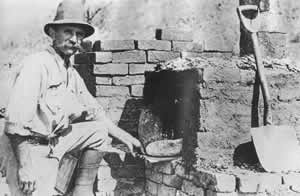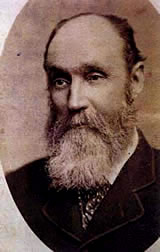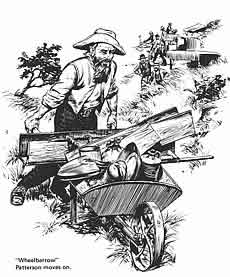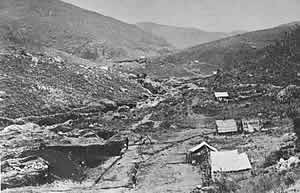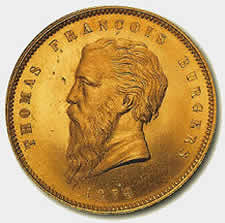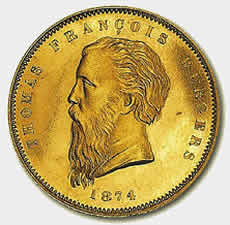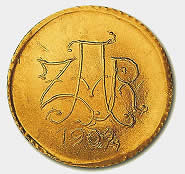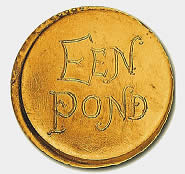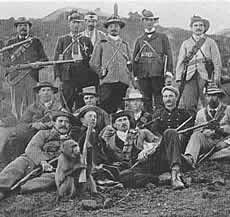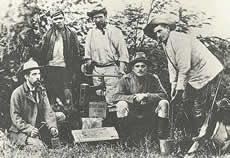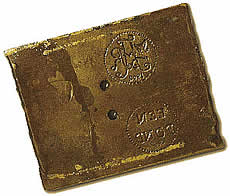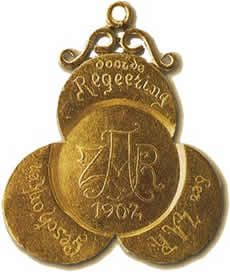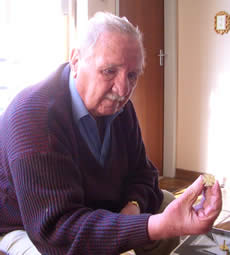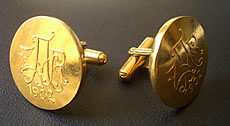PILGRIMS REST HISTORY AND INFORMATION
PILGRIMS REST
Compiled and written by Louis-John Havemann
I have used among others the authors A.P.Cartwright and T.V.Bulpin's writings in no small measure to compile this summary
Any further information and images would be gratefully received
and recorded
with credits:
email lj-tours@iafrica.com
“GOLD”
There is an almost reverent ring to the word and it has lured people through the ages to risk their lives and endure unbelievable hardships, in some of the most inhospitable places on earth, in search of this precious commodity.
![]() FOR FASCINATING OLD PHOTOS OF PILGRIMS REST
FOR FASCINATING OLD PHOTOS OF PILGRIMS REST
![]() FOR MORE INFORMATION ON THE CHARACTERS OF THE GOLD RUSH
FOR MORE INFORMATION ON THE CHARACTERS OF THE GOLD RUSH
Evidence of mine diggings at Pilgrim's Rest goes back to ancient times when unknown people worked the gold bearing quartz reefs for this precious metal.
A number of insignificant gold deposits were discovered in the northern parts of South Africa between 1840 and 1870. The first discovery of gold in the Transvaal which led to the first gold rush in South Africa, took place in 1873 when payable gold was discovered on the farm Geelhoutboom belonging to Tom McLahlan, near the town of Sabie in Mpumalanga.
|
TOM McLAHLAN
|
President Burgers, who visited
the site, named the camp "Mac Mac" and declared the area the New Caledonia Gold Fields.
The Pilgrims Rest gold rush was situated in one of the most beautiful and healthy settings of any gold rush in history. How did it happen? |
FOR MORE INFORMATION ON SOME CHARACTERS CLICK HERE
The year was 1873 and we need to focus on a certain prospector who was responsible for starting the rush to Pilgrims Rest. These old prospectors, or “Diggers”, were by the nature of their occupation, strong resolute men, who stoically bore all sorts of hardships in pursuit of that, at the time, illusive metal.
|
This picture of Wheelbarrow Patterson is by courtesy of P.W.Wheeler and Roy Taylor |
You the visitor should pause awhile and look again carefully at this rugged terrain, while trying to imagine what it must have been like pushing a heavily laden wheelbarrow up and down and around these mountains!!.
The diggings at Mac Mac were to Patterson’s mind, too overcrowded, so one day with a last wash, he packed up his sluice box and equipment and with a terse, “I’m off”, headed for the hills.
|
| It was’t long before another digger, named William Trafford, entered the valley and also discovered gold in the stream. |
This is an early photo of Pilgrims Rest |
Word spread like wildfire and soon a flood of diggers shook Wheelbarrow Patterson out of his customary calm. By the 3rd January 1874, Pilgrims Rest was such a hub of activity with Mac Mac falling into comparative insignificance, that Major MacDonald, the Gold Commissioner, moved his office to Pilgrims Rest in order to better control this gold field with it's lively and rowdy element of diggers. |
|||||||||||||||||
There were peach trees growing on the banks of the Blyde, which indicated that other people had passed by here quite some time before and had left the peach pips to germinate and grow. They were thought to have been long ago hunters from Lydenburg,or Voortrekkers but nobody knows for certain. These peach trees are mentioned so often, that there has to be a significance attached to these exotic, non indigenous, fruit trees growing in this setting.
1874 was a boom year for Pilgrims Rest, with excellent daily finds of gold and the Mac Mac fields being deserted. Men of all nationalities were arriving in ever increasing numbers to cash in on the rush and by the end of 1873 there were some 1,500 diggers working 4,000 claims in and around Pilgrim's Rest. By 1874/75 Pilgrim's Rest had become the social and commercial centre for the gold rush diggings which consisted of the Upper, Middle and Lower Camps. In 1881, David Benjamin, a London financier, obtained the mining rights to Pilgrim's Rest and the surrounding area. His first move was to compensate the remaining diggers for
their claims. This caused much unrest amongst the Diggers but the days of the small miner had to give way to big business.
Some of the Characters of Pilgrims Rest and the gold rush
When history and a story such as the Pilgrims Rest gold rush is narrated, there have to be references to people and characters who contributed to the making and telling of the tale. I doubt that a more cosmopolitan assembly of people, sharing such diverse skills and talents, encompassing such a broad spectrum of human strengths and weaknesses, emotions and wills has ever been assembled in such a remote and beautiful setting as the Pilgrims Rest gold rush. How do I identify and number these people? Let me try to allow you, the reader, to learn about these colourful players and their contribution to Pilgrims Rest's history. Of necessity I have to try and deal with them "One by One" .
Click on a name below for more details ;
COINS & MEDALS FROM PILGRIMS REST
THE BURGERS POND
President Burgers had a great desire to introduce indigenous coinage into the ZAR and it was he who had the first ZAR coins minted.
The dies were made by Mr L C Wyon, of the British Royal Mint and the coins were struck by the firm of R Heaton & Sons of Birmingham.
THE VELD POND
Her findings reveal that the true head of the team was in fact Field Cornet AGE Pienaar and not Kloppers as he made himself out to be. Kloppers was only appointed as head of the "Munt te Velde" three weeks before peace was declared and that was after medals had already been issued to various people in recognition for their work done on the Veldpond. Klopper's claim that he made the gold malleable by using mercury is also discredited. Michael Cooney,a master gold essayer was a member of the team and he in fact appears to have been the only person with enough expertise to have worked the gold. William George Reid a trained blacksmith actually made the dies. This falsified version of the history of the Veldpond belies the fact that each of the five members of the team was a specialist in his own field and that the honour should not be conferred on one person only. The five members were 1. The Leader:- Andries Gustav Erlank Pienaar, 2. Essayer:- Michael Joseph Cooney, 3. Designer:- Philippus Johannes Kloppers, 4. Blacksmith/Mechanic:- William George Reid, and lastly 5. Gold Smelter:- Dick Graham
The above information is by courtesy of Dr. Rentia Landman from her website www.veldpond.co.za
|
|||||||||||||||||||
An article on the Veldpond in the Star newspaper on Saturday the 17th of September, 1927,was written by a man who was able to personally interview Mr Kloppers. Remember that this information was not entirely true. I include this link purely for interest's sake To read this historical document Click Here; http://www.sacoin.co.za/coin_topic6.html
THE BURGERS CROSS
The medals to both Mrs MacLahlan and Austin were accompanied by a letter from the president dated 25 August 1874 saying, "My Dear Madam, In handing you over the accompanying "Burgers Cross" as a token of sincere respect and acknowledgment on behalf of myself and the public of the Goldfields for your kind and devoted services rendered to those who were in distress, I feel that I express the feelings of all when I say: May God reward you for your noble self denial! Trusting that you may be spared many years to enjoy the fruits of a noble work ably performed. I remain my dear Madam your obd servant. Thos. Burgers, State President S.A. Republic" Further information from Mr. Arthur Radurn on the Burgers Cross which I find very informative and is not freely available, is the fact that there are also at least two uses of the Burgers Cross in local heraldry:? 1.) In the coat of arms of the (now defunct?) Transvaal Department of Public Works in Pilgrim's Rest. 2.) In the coat of arms (shoulder flash) of 7 SA Infantry Battalion, which is/was based in the area. The value of these medals lies not only in their rarity but also in the amount of gold they contain. These photos are by courtesy from the book "Pilgrims Rest a Pictorial History" (Transvaal Provincial Administration library & museum service) If anybody has a better photo or can obtain a better photo, please let me have it, with credit to you, because I believe this one does not do justice to this outstanding medal.
|
|||||||||

